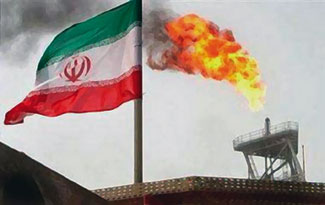International Politics
High prices do not guarantee Middle Eastern prosperity
Record oil prices = Good times? Think again. Despite record oil prices, real economic growth rates in the oil producing countries of the Middle East are still hovering around 5% to 6%, with the fear that any decline in oil prices may lead to recession. Real per capita income has improved, but it is still less than the 1970s levels by about 75% in large oil producing countries. Iran is under threat of war, and the fate of international oil companies’ buyback contracts is still unknown. The Iraqi oil industry remains in shambles. Syria and Dubai are expected to become net oil importers very soon. Oil production and revenues in Yemen and Oman have declined rapidly. Some people still question the reliability of Kuwaiti and Saudi reserve figures. Inflation rates are increasing, despite conservative monetary policies that aim to keep inflation around zero. Higher liquidity is driving inflation northward. Higher oil revenues, the fear of confiscation of financial assets in the US under the Patriot Act, and the possibility that the US Congress may pass a law to punish oil producers for curtailing output have all contributed to higher liquidity and inflation. The declining US dollar has also increased inflation in these countries. Inflation causes uncertainty in financial markets and has hurt fixed-income families. In the last three months, regional stock markets collapsed, losing more than 60% of their value. Despite several remedies, they continued to decline. Recent media reports indicate that these traditional, conservative religious countries have suffered from large increases in suicide and divorce rates. A study published last month indicates that 60% of marriages in the Saudi city of Jeddah end up in divorce. Most experts attribute this most recent increase in suicide and divorce rates to the stock market collapse. Production capacity. Despite increases in production capacity in Kuwait, Saudi Arabia and the UAE (see the June 2005 column for details), the increase is relatively small, and it barely meets the conservative estimates of growth in world oil demand. Saudi Arabia’s expansion is the largest. The country plans to add 2.3 million bpd of production capacity by 2009, including the 1.2-million-bpd Khurais field, which was mothballed in the past.
Unfortunately, the increased production capacity in those countries was met by output disruptions in Nigeria, and a decline in output from areas such as the North Sea and Latin America, which explains part of the recent increase in oil prices. While expansion plans show that production capacity will continue to increase in the next four years, we have to remember that some of the new projects are not that new. Some of them were mothballed during periods of low oil prices in the 1980s and late 1990s. Evidence indicates that some Gulf nations mothballed large projects and incurred massive financial losses when world demand for oil declined, or when the cost of these projects was rising. The possibility of mothballing some of the planned projects is real, especially when the president of the country with the world’s largest economy and greatest oil consumption, George W. Bush, calls for eliminating dependence on imported oil, and when the US Congress calls for allowing Americans to sue OPEC members. In addition, the cost of adding production capacity has increased rapidly in recent months. Rates for drilling rigs have increased substantially, and the costs of some metals used in casing, pipelines and platforms have increased by more than three-fold in recent months. Iran’s nuclear stand-off. While it is not in Iran’s interest to cut off its oil exports in retaliation for sanctions imposed by the UN Security Council, the Iranian government will be under pressure from its population to retaliate. What will Iran do in case of sanctions or an air strike on its nuclear facilities? Iran might retaliate by imposing oil embargoes on certain countries, especially those who support the sanctions or the air strike against its nuclear facilities. But history teaches us that embargoes are not effective. It also teaches us that embargoes might hurt a targeted country, only if they are accompanied by a production cut. If Iran imposes an embargo and cuts production, it will hurt friends and foes, alike. However, the Iranian government might choose to impose a lip-service embargo to calm people in the streets. Iran may terminate the contracts of operators that belong to certain countries, not to punish these nations but to force their companies to discard lucrative buyback contracts and sign new deals that are more favorable to Iran. Iran may cut off Iraqi oil exports from the south. In this case, Iran retaliates by punishing the Bush administration, and its allies in Iraq, and at the same time benefits from higher oil prices. In conclusion, economic factors will determine Iran’s behavior. The country will not cut exports. Economic factors will also determine the Gulf region’s future capacity expansion. Add the lack of skilled human resources in the oil industry and political uncertainty in the oil producing countries to the mix, and we end up with a murky picture. Nevertheless, it is a picture with a black arrow pointing up: The price of oil will rise.
|
|||||||||||||





